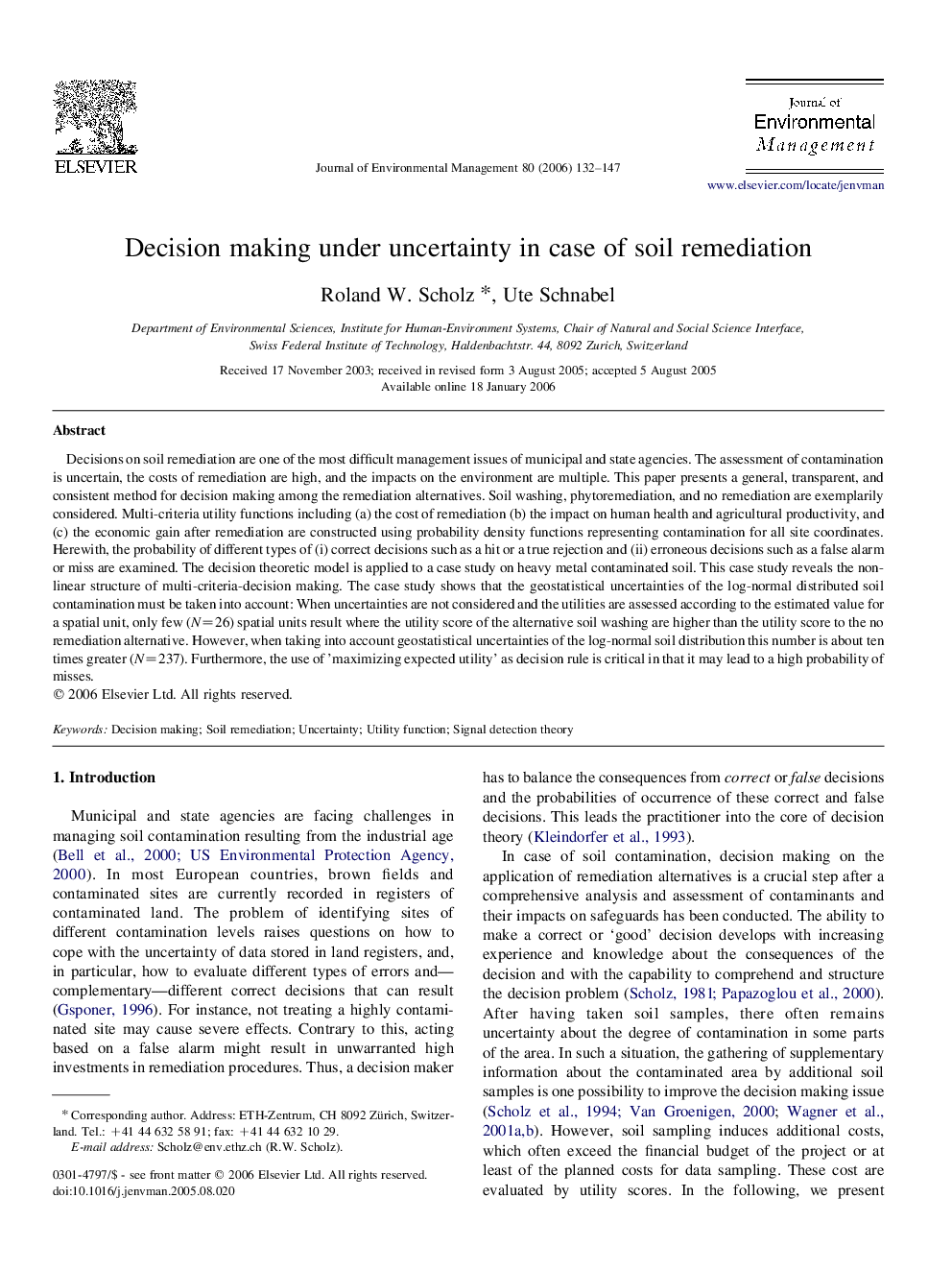| Article ID | Journal | Published Year | Pages | File Type |
|---|---|---|---|---|
| 1058881 | Journal of Environmental Management | 2006 | 16 Pages |
Decisions on soil remediation are one of the most difficult management issues of municipal and state agencies. The assessment of contamination is uncertain, the costs of remediation are high, and the impacts on the environment are multiple. This paper presents a general, transparent, and consistent method for decision making among the remediation alternatives. Soil washing, phytoremediation, and no remediation are exemplarily considered. Multi-criteria utility functions including (a) the cost of remediation (b) the impact on human health and agricultural productivity, and (c) the economic gain after remediation are constructed using probability density functions representing contamination for all site coordinates. Herewith, the probability of different types of (i) correct decisions such as a hit or a true rejection and (ii) erroneous decisions such as a false alarm or miss are examined. The decision theoretic model is applied to a case study on heavy metal contaminated soil. This case study reveals the non-linear structure of multi-criteria-decision making. The case study shows that the geostatistical uncertainties of the log-normal distributed soil contamination must be taken into account: When uncertainties are not considered and the utilities are assessed according to the estimated value for a spatial unit, only few (N=26) spatial units result where the utility score of the alternative soil washing are higher than the utility score to the no remediation alternative. However, when taking into account geostatistical uncertainties of the log-normal soil distribution this number is about ten times greater (N=237). Furthermore, the use of ’maximizing expected utility’ as decision rule is critical in that it may lead to a high probability of misses.
